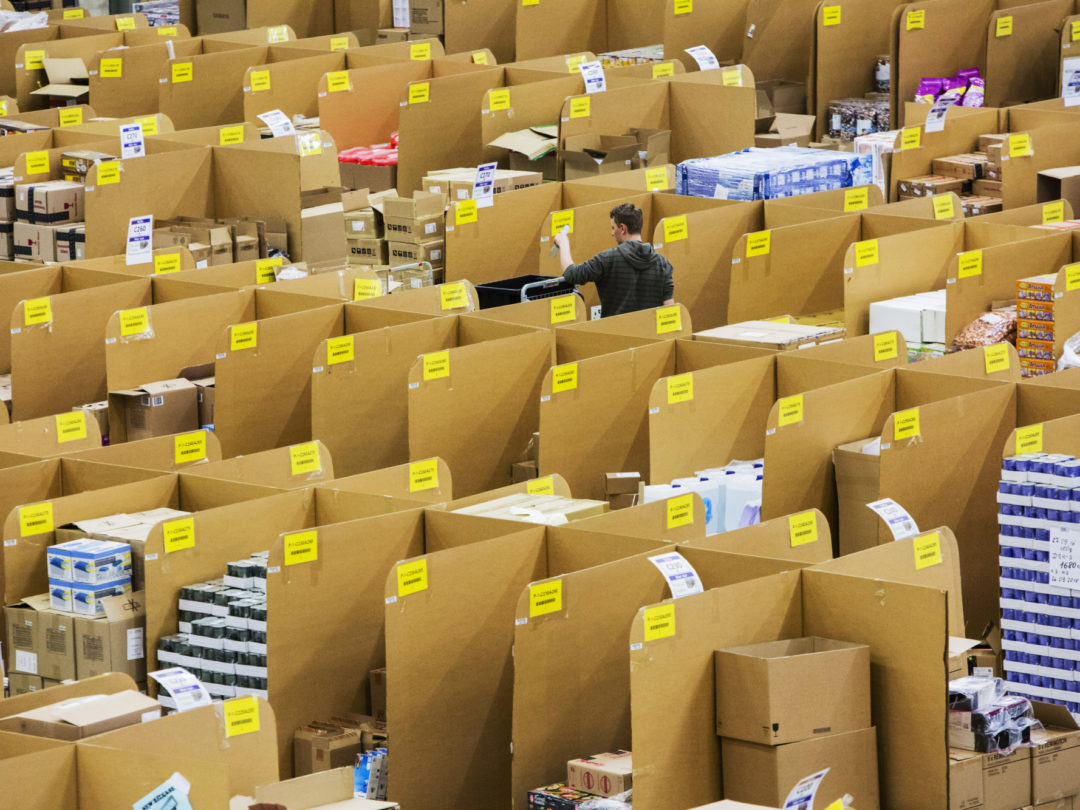
Visit Our Sponsors |
|
|
|
|
|
|
|
|
|
|
|
|
|
|
|
|
|
|
|
|
|
|
|
|
|
|
|
|
|
|
|
|
|
|
|
|
|
|

In the midst of the coronavirus pandemic and a plummeting economy, retailers must nevertheless prepare for the traditional peak shopping season. Some are ready, but many are not. In this conversation with SupplyChainBrain Editor-in-Chief Bob Bowman, Mike Smola, Vice President of Sales for Enterprise and Strategic Mobility Team with Panasonic System Solutions Company of North America, lays out what it will take for retailers large and small to meet the needs of holiday shoppers.
SCB: Are we looking at a permanent shift in consumer shopping habits, favoring online shopping and e-commerce?
Smola: Yes, absolutely. That’s a shift that began a couple of years back, with a full omnichannel approach to shopping. The influence of Amazon and multiple online resellers competing with brick-and-mortar stores has started evolutionary change. Where we've gone since February with COVID-19 has greatly accelerated that change in the market.
SCB: How can retailers prepare for the looming peak shopping season?
Smola: We’ve seen an unprecedented turnabout in industry with COVID-19, with e-commerce spending up dramatically — almost 78% since May alone. Some of our partners in delivery are seeing what they consider peak-season deliveries happening now. It’s about building that flow point up to the holiday season, and challenging retailers and distributors to determine what the next peak is, and the “next normal” in the distribution process. With that, I think there are a lot of challenges retailers have in upping the stream to make sure they have the right products at the right time at the right location, while adhering to CDC guidelines to ensure that the positioning of goods and services is done in a healthy and safe manner.
SCB: What do we mean when we talk about the need to “re-imagine” storefronts? How different would they be?
Smola: It entails a strategy around an omnichannel approach — enabling consumers to have access to their goods both online and through brick and mortar, with curbside pickup. It’s about having a multi-phased approach to capturing business with the shopping clientele. A lot of practices need to be adjusted using technology, real-time inventory and supply chains that can provide near-immediate delivery.
SCB: So the physical store becomes a location for fulfilling online orders, as well as being a place where consumers can shop in the traditional way?
Smola: I definitely believe so. That’s something we've seen with the Amazon effect. We always talk about the last mile of delivery as being the hardest and most expensive element in pushing goods to consumers. The old spoke-and-wheel process of having goods in a centralized location and delivering on demand has changed. Now it’s about bringing product closer to consumers to have real-time availability when and where they want it. The storefront becomes the final distribution point, reducing the need for complex distribution centers for a majority of goods.
SCB: You mentioned curbside pickup. Many retailers have yet to perfect that technique. How can they make it work?
Smola: A lot of that is about catching up with technology — integrated mobile computing within the storefront, with real-time accessibility to inventory that allows end users to see and procure product online, then link that to curbside delivery. There are a lot of gaps retailers haven’t yet invested in. Today, it's very manual in terms of process.
SCB: What do you imagine that a contactless curbside pickup would look like?
Smola: A lot of big-box retailers are creating defined parking spaces where you pull in, hit a button on your cellphone, and a courier comes out with the product, placing it in your back seat or trunk and then walking away. The financial transaction has taken place prior to your arrival, and it's quite seamless. But again, it requires taking your mobile form of payment and putting it into a website. I don't think we've seen much real-time curbside pickup, where you can pull up in front of the curb and get your product within a minute or two.
SCB: What about scaling it? During the peak holiday shopping season, I can imagine dozens of cars or more lined up for curbside pickup.
Smola: A lot of experience has to take place this season. Major retailers have started to build out that strategy, but I don't think anybody expected that execution would need to happen within the next 12 months. We've seen parking lots get re-provisioned with designated spots, typically six or seven of them in front of a Target or a Walmart. But to make possible high-volume pickup, you need to change the infrastructure of both the store and the parking lot. I think we'll probably see that happening in the next 24 months, but it's going to take a big learning curve this holiday season to accomplish that.
SCB: What do you consider to be the biggest challenge of maintaining a true omnichannel strategy?
Smola: Again, the big-box, tier-one retailers have accomplished a lot of that, because they already have the technology for acquiring real-time visibility. But mid- and low-tier retailers don't have that luxury. They haven’t made the necessary investment into back-office systems to allow for real-time utilization of data, and extending that to the customer experience. There’s going to have to be some scaling across the industry to support an omnichannel environment. Retailers need to acquire rugged products to achieve the first step in edge-based computing, to help them manage inventory from the back of the store all the way to curbside delivery to the customer.
RELATED CONTENT
RELATED VIDEOS
Timely, incisive articles delivered directly to your inbox.






